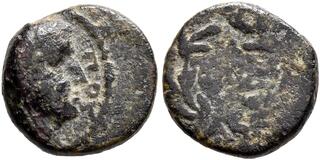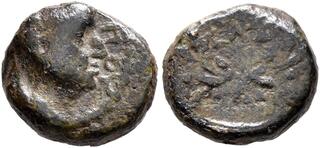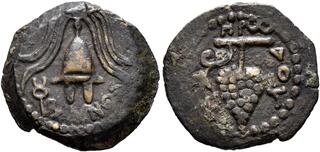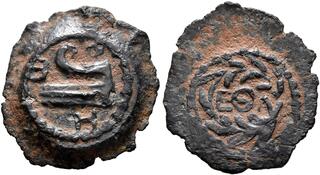Match 1:
Match 2:
Match 3:
Match 4:
Match 5:
| Leu Numismatik AG > Auction 15 | Auction date: 1 June 2024 |
| Lot number: 124 Price realized: This lot is for sale in an upcoming auction - Bid on this lot  | |
| Lot description: KINGS OF CAPPADOCIA. Archelaos Philopatris Ktistes, 36 BC-AD 17. Drachm (Silver, 19 mm, 3.74 g, 1 h), RY 20 = 17/6 BC. Diademed head of Archelaos to right. Rev. ΒΑΣΙΛΕΩΣ APXEΛΑΟΥ ΦΙΛΟΠΑΤΡΙΔΟΣ TOY ΚΤΙΣΤΟΥ Club; in field to right, K (date). BMC 1. DCA 464. RPC I 3601.10 (this coin). Simonetta, Coins, 1 corr. (reverse legend). Simonetta 1. SNG Copenhagen 165. Rare and undoubtedly among the finest known examples. A wonderful coin, beautifully toned and with a portrait of great sensitivity and beauty. Faint marks, otherwise, about extremely fine. Ex Auctiones AG 20, 8-9 November 1990, 464 and from the collection of Osman Nouri Bey, Cahn 60, 2 July 1928, 1021. The coinage of the longstanding Cappadocian monarch, Archealos Philopatris Ktistes, diverges significantly from that of his Ariobarzanid predecessors. Firstly, spanning his reign of fifty years, his coins consistently depict him as a youthful ruler - a deliberate emulation of his patron, Augustus, in Rome. Secondly, departing from the traditional depiction of a standing Athena on the reverse, Archealos opts for Herakleian imagery, notably featuring the hero's club on the drachms. Thirdly, his hemidrachms mark the debut of the Argaios, showcasing a schematic portrayal of the sacred mountain on the reverse, coupled with a portrait of Herakles on the obverse. Lastly, and perhaps most notably, Archealos adopts the titles 'Philopatris' ('lover of the fatherland') and 'Ktistes' ('founder'), departing once again from the conventions of his predecessors. Archelaos' choice of epithets reveals his political agenda. By adopting the titles 'Philopatris' and 'Ktistes,' he presents himself as the patriotic re-founder of the Cappadocian Kingdom, a fitting characterization for one of the most accomplished Roman client kings of his era. Upon ascending the throne, Archelaos clearly sought legitimacy not only through the support of the Roman superpower but also by aligning himself with local customs and the influential Cappadocian nobility. On the international stage, he strategically arranged the marriage of his daughter, Glaphyra, to Alexander, the son of Herod the Great, in 17 BC. This union resulted in three children: a daughter and two sons, Alexander and Tigranes, both of whom later ascended to the throne as Armenian kings (as Tigranes V and Tigranes VI). Tragically, Glaphyra's first husband, Alexander, was killed by Herod in 8/7 BC. Subsequently, she married Juba II of Mauretania, divorcing him in 4 AD to marry her first husband's half-brother, Herod Archelaos. However, Archelaos himself also met a tragic end. Despite his lengthy fifty-year reign, he was deposed and arrested by Tiberius in 14 AD, narrowly avoiding capital punishment due to alleged dementia. He spent his remaining years in exile and passed away in 17 AD at the age of eighty. Estimate: 5000 CHF | 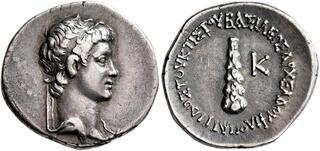 |




